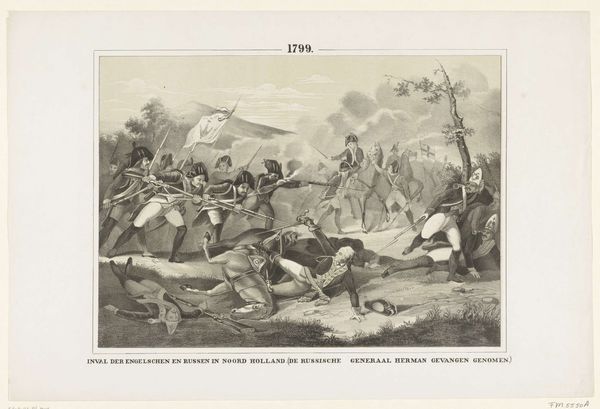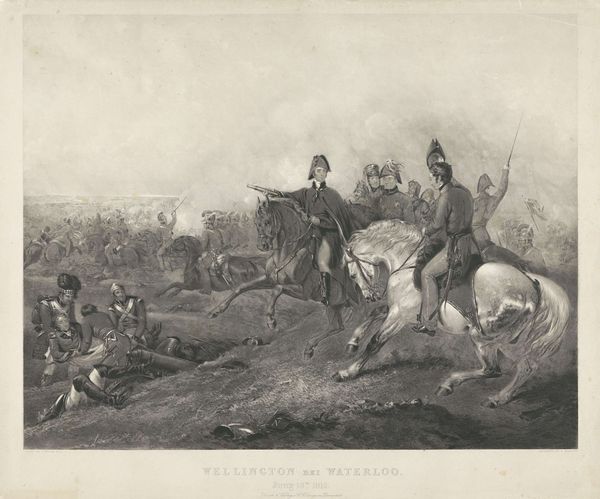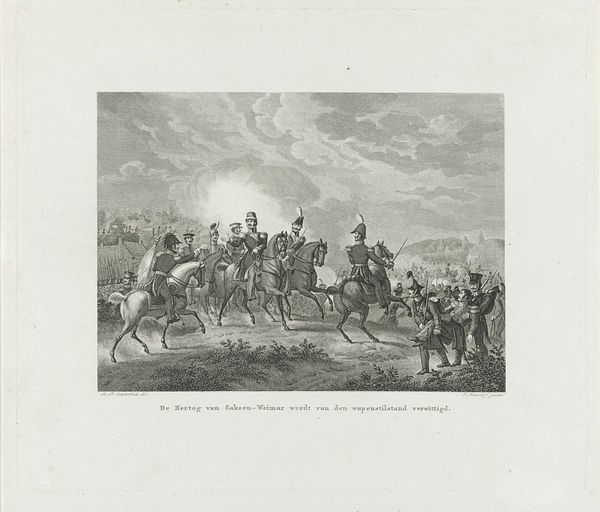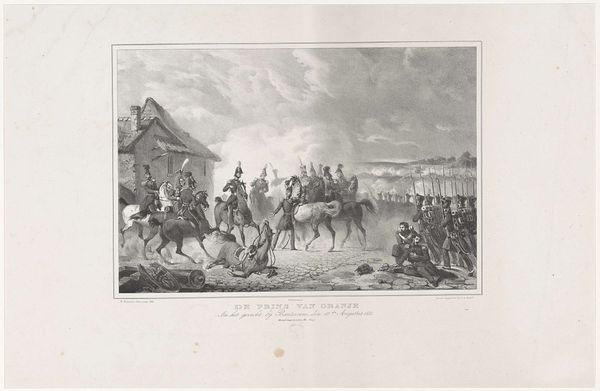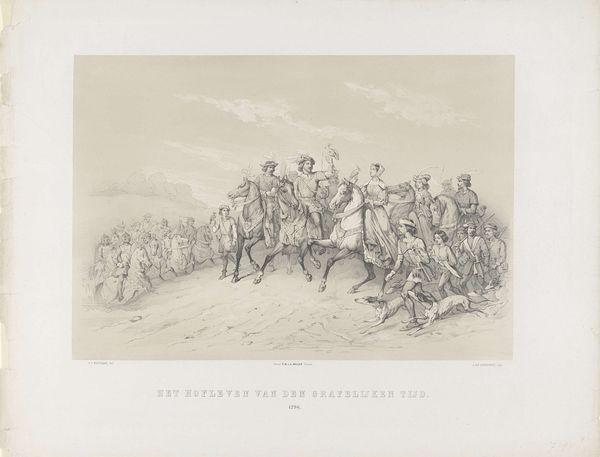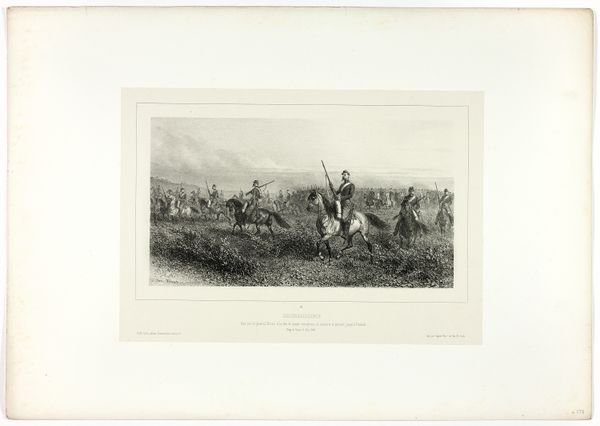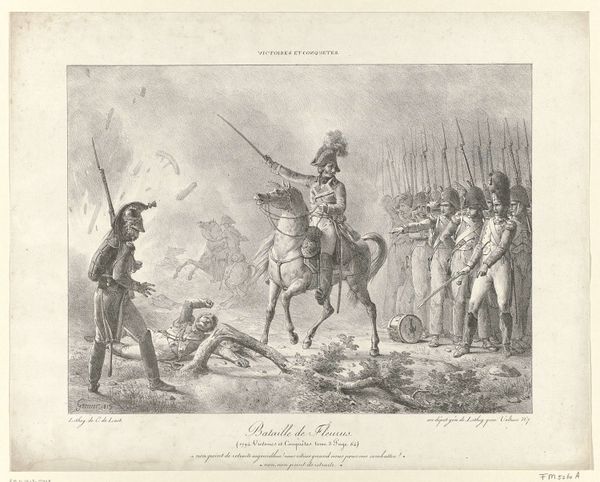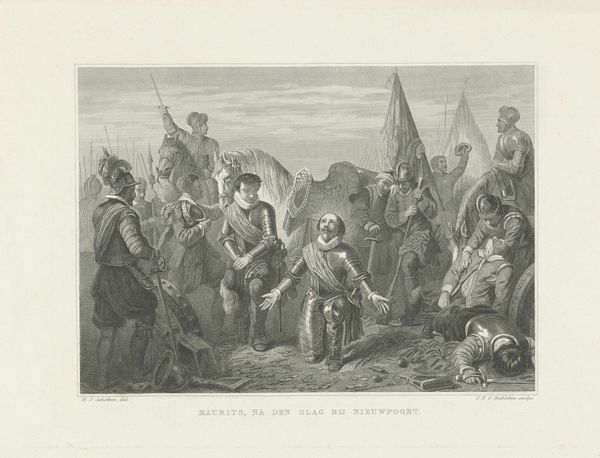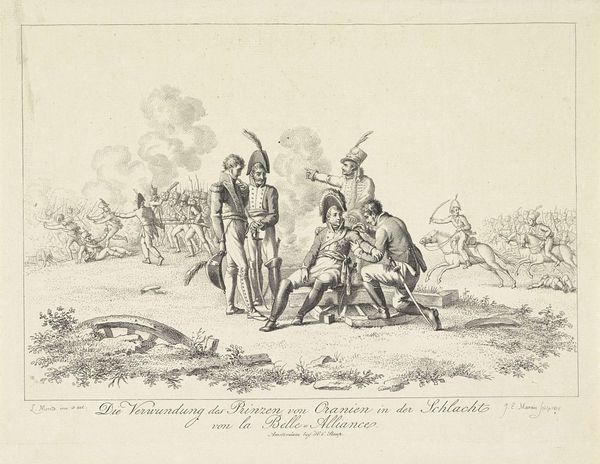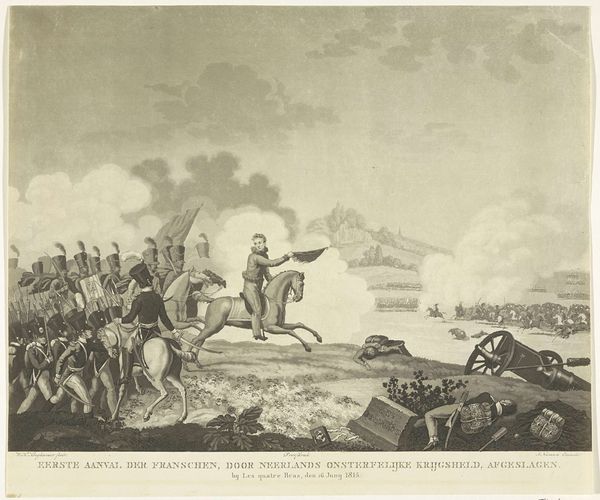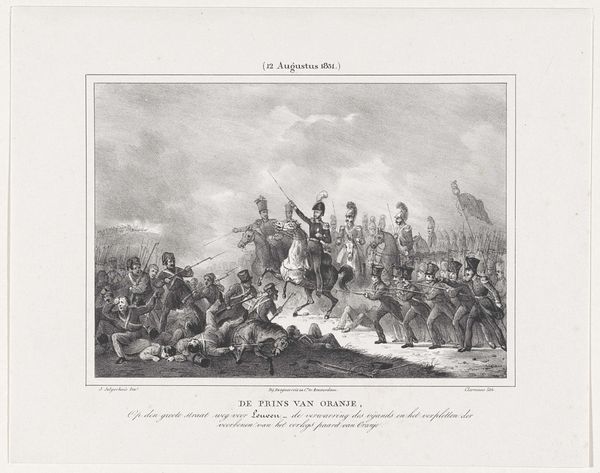
Prins van Oranje raakt gewond tijdens de slag bij Waterloo, 1815 1853 - 1855
0:00
0:00
print, engraving
#
aged paper
#
16_19th-century
# print
#
landscape
#
history-painting
#
engraving
#
realism
Dimensions: height 356 mm, width 530 mm
Copyright: Rijks Museum: Open Domain
Curator: This engraving, dating from 1853-1855, depicts the Prince of Orange being wounded at the Battle of Waterloo in 1815. Editor: The image has an energy that almost vibrates off the aged paper! There’s chaos communicated through the rearing horses and prone figures – but the greyscale also mutes that energy slightly, lending an antique solemnity. Curator: I see that solemnity, certainly. Note the symbolism: the fallen drum, an immediate indication of disarray, perhaps even defeat. Then observe how the Prince of Orange is central but leaning. Not collapsing but not entirely triumphant either. He remains an iconic figure balanced between valor and vulnerability. Editor: It is fascinating how much information can be translated with engravings, given the technology, the artist – though anonymous here, wouldn’t have been able to simply replicate. The creation is far more mediated, with the labor clearly segmented, and what that tells us about the market for these history prints. The quality of line varies subtly too… were there different hands working on it? Curator: Quite possibly! It would be worthwhile to understand this print as an artefact produced for consumption. The image of injured royalty, an emotional image, as commodity. Its worth goes well beyond aesthetic value. Think of the tradition of royal portraiture it leans on! These representations cement lineage. They influence societal concepts. Editor: So, a sort of propaganda through carefully deployed symbols of royal suffering. Curator: Exactly! Consider too the role of the printing press in wider circulation. How affordable was it? Who would be its intended audience? Editor: Well, tracing the publication and distribution, investigating paper sources – that could illuminate much about its socio-economic significance. The image itself provides the jumping-off point into those material histories. Curator: And looking deeper into what Waterloo signifies even today. Its reverberations still echo through societal memories of valor, loss, and changing European power dynamics. Editor: A seemingly simple image contains an astonishing density of cultural and economic narrative. Curator: Precisely! Hopefully our visitors see this not merely as historical documentation, but as a testament to the enduring power of symbols.
Comments
No comments
Be the first to comment and join the conversation on the ultimate creative platform.

